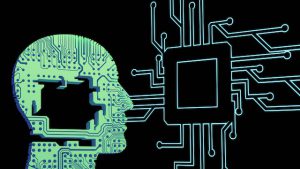Possible Future Uses of AI

Photo by Steve Johnson on Unsplash
Microsoft has been investing heavily in AI and machine learning for several years and has integrated AI into many of its products and services. Improvements to Bing with the integration of ChatGPT has generated both industry buzz and enthusiasm (and some concerns) from end users. After hosting last month’s #CollabTalk TweetJam on the topic, I’ve been reading back through the community conversation and taking note of many of the questions people are asking about the future of AI.
The conversation mostly split between two topic areas: First, we need to better understand the impacts and ethics surrounding AI; and Second, we need more visibility into Microsoft’s plans to integrate AI into the productivity tools that we use, such as the Microsoft 365 platform.
Concerns about AI’s impacts
On the first point, some of the questions asked:
- How will AI impact job roles and responsibilities, and what new skills will be required to stay competitive in the job market?
- What impact will AI have on the future of work, and how can individuals and organizations prepare for this shift?
- What are the ethical considerations of using AI, and how can we ensure that AI is used responsibly and safely?
- What are the potential risks and challenges associated with relying on AI for these tasks? For example, how can we ensure that AI is used in a way that is ethical, transparent, and fair, and that it doesn’t lead to job displacement or other unintended consequences?
- How will AI continue to evolve and change in the future, and what implications will this have for society as a whole?
- How can AI be used to improve collaboration and communication in remote and hybrid work environments, and what are the most effective tools and strategies for doing so?
- How can AI be used to improve productivity and efficiency in the workplace?
These are all complex and multi-faceted questions that require careful consideration and ongoing dialogue among stakeholders in various fields. I think most people would agree that we need ongoing dialogue within the community, and across various fields and industries, to continue to explore the potential of AI and machine learning within modern work in order to ensure that we are making informed decisions and creating a future that is ethical and sustainable.
The productivity upside
On the second point mentioned above, people shared feedback on the AI integrations already available within Microsoft products and features, and where they see it going:
- Integrating AI into Microsoft Teams to improve communication and collaboration. For example, AI-powered chatbots can help automate common tasks and provide quick access to information.
- Developing AI-powered tools for developers to help them build more intelligent applications. For example, Microsoft’s Cognitive Services APIs provide pre-built algorithms for speech recognition, image recognition, and other common AI tasks.
- Using AI to improve cybersecurity by detecting and responding to threats more quickly and effectively. For example, Microsoft Defender uses AI and machine learning to detect and respond to threats in real-time.
- Predictive analytics: By analyzing large amounts of data, AI can help predict future trends and patterns, which can help businesses make more informed decisions and plan for the future.
- Personalized learning: AI can be used to personalize education and training by adapting to individual learning styles and providing tailored feedback and support.
- Process automation: AI can be used to automate routine tasks and processes, freeing up employees to focus on more complex and creative tasks. For example, chatbots can be used to automate customer service interactions, and machine learning algorithms can be used to automate data entry and analysis.
Long-term ROI
The integration of OpenAI and ChatGPT into Microsoft 365 and other productivity tools and platforms will undoubtedly have a positive impact on the future business ROI for Microsoft. I think the company is already seeing a boost in the marketplace. By incorporating AI-powered natural language processing and chatbot capabilities into its products, Microsoft can improve the user experience, increase productivity, and reduce customer support costs. Their integration of OpenAI and ChatGPT is expected to yield significant long-term benefits in terms of revenue growth, customer retention, and operational efficiency.
But the integration of OpenAI’s cutting-edge AI technology into Microsoft’s products is also likely to attract more customers and help Microsoft stay competitive in the rapidly evolving technology landscape. Suddenly, Microsoft is cool again (of course, for some of us, it’s always been cool) and everyone is watching the company, waiting to see what they do next.
Being the “cool kid on the block” can be important for Microsoft to stay relevant and competitive in the technology industry. As technology continues to evolve and new players emerge, Microsoft must adapt to changing consumer preferences and expectations to remain successful. Being perceived as “cool” can help Microsoft attract new customers, retain existing ones, and establish itself as a leader in the market. Additionally, being seen as innovative and cutting-edge can help Microsoft attract top talent and foster a culture of creativity and entrepreneurship within the company.
However, as great as it is to be viewed as the “cool kid,” the company’s success ultimately depends on delivering high-quality products and services that meet the needs of its customers. On that note…I can’t wait to see what’s next for Microsoft!




